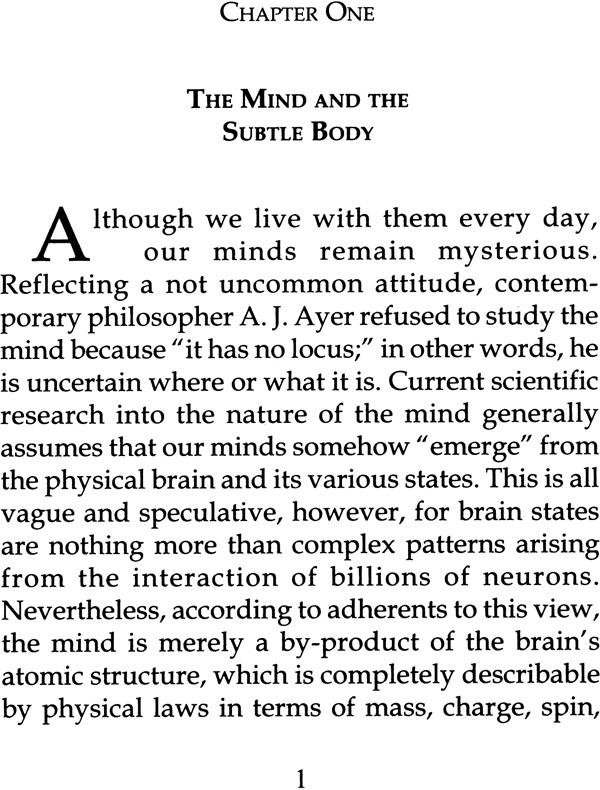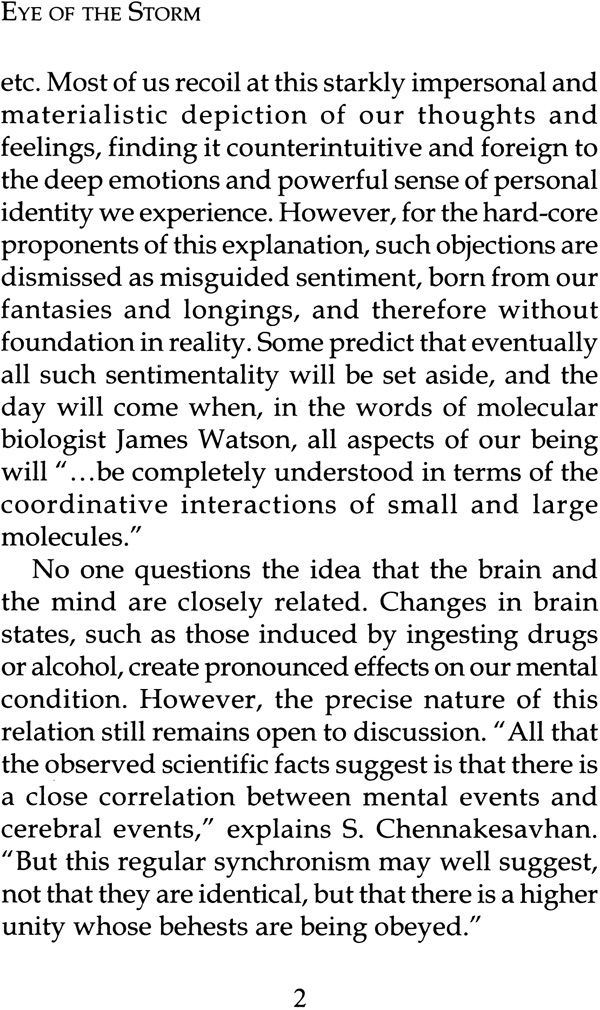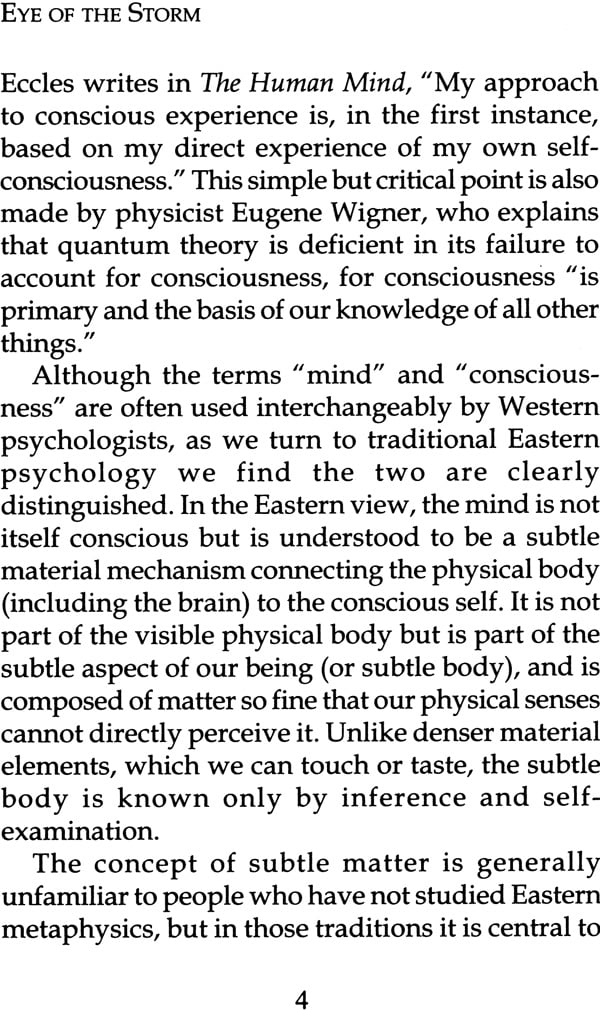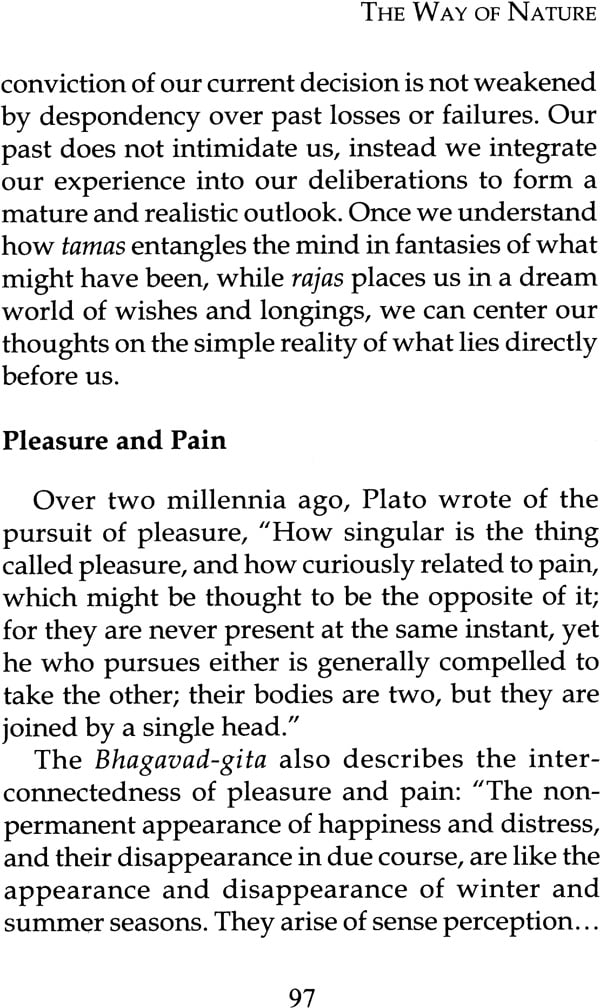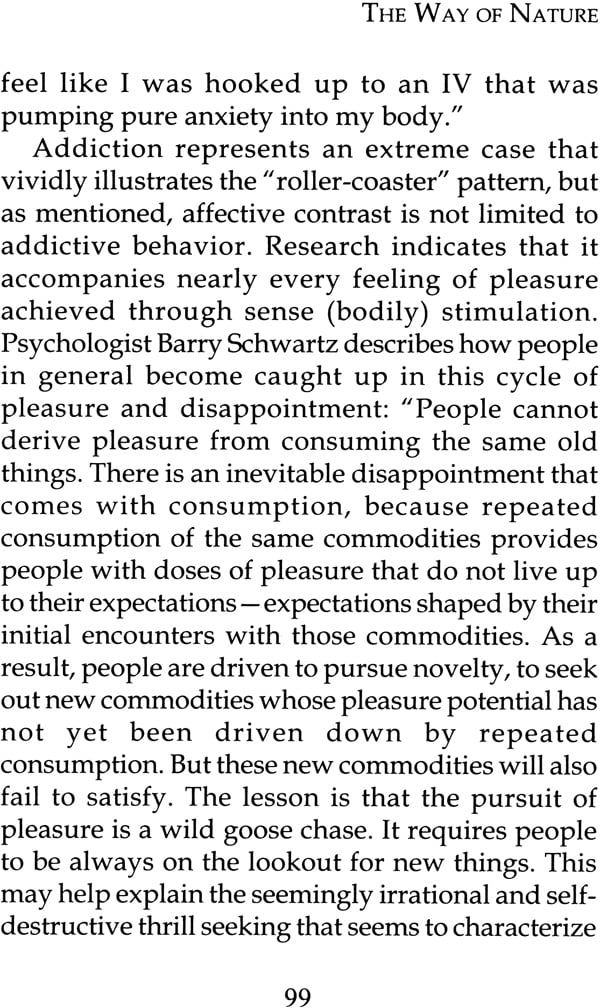
The Eye of the Storm (The Power of the Undisturbed Mind)
Book Specification
| Item Code: | NAN360 |
| Author: | Austin Gordon |
| Publisher: | Torchlight Publishing |
| Language: | English |
| Edition: | 2000 |
| ISBN: | 9781887089425 |
| Pages: | 120 |
| Cover: | Hardcover |
| Other Details | 7.0 inch X 5.0 inch |
| Weight | 210 gm |
Book Description
The Eye of the Storm is a concise, easy-to-read synthesis of the perspectives and practices of an ancient culture in the art of developing true peace of mind. Gordon presents a cogent alternative to modern views on the nature of the mind and the self that furthers our understanding of our natural, peaceful psychological condition. Simple yet profound, these principles have successfully guided the lives of seekers in diverse cultures for countless ages. This fascinating perspective provides invaluable guidance in freeing ourselves from the anxieties and misconceptions that cover our natural serenity. Presented here in terms especially relevant to our current climate of stress and uncertainty, these perspectives will unfailingly help us to step beyond the mundane and prosaic to actual “soul-consciousness,” where life is ever fresh and incessantly joyful.
Austin Gordon has lived and traveled extensively in India and Southeast Asia, spending much time studying Asian culture, religion, and philosophy. He received his Ph.D. from the Department of Politics has Society at the University of California at Irvine, and he is now teaching at Chapman College and CSU. He lives with his wife and daughter in Irvine, California.
The mind can be our friend or our enemy. When disturbed, it is the repository of anxiety, anger, and materialistic attachment - three forces that disrupt our natural tranquility and clarity of thought. When undisturbed by these agents, however, the mind becomes our unswerving friend, acting as a powerful tool to help invoke our innate spiritual awareness. But how to turn our minds from enemy to friend, especially in the frantically paced and data-overloaded age we live in? Fortunately, genuine spiritual knowledge remains unaffected by the veneer of modernity, and so, in spite of the nature of our times, we are still able to benefit fully from the wisdom contained in the world's great cultural traditions. These timeless teachings, which form the basis of The Eye of the Storm, offer invaluable guidance in freeing ourselves of the anxieties and misconceptions that cover our natural serenity and blissfulness.
With the advancement of communication and transportation technologies, interaction between cultures has reached unprecedented levels. As a result, societies throughout the world have generally become more open-minded and informed about one another. In recent years, for example, healing practices from the world's older civilizations have become increasingly popular, with herbal remedies and techniques such as acupuncture being appreciated as simple and natural, yet often highly effective, means to promote healing.
The time-tested cultures of our world also offer great insight into the art of developing a mind free from unwanted disturbances. Although when read in their original form these teachings may appear somewhat alien or esoteric to contemporary readers, the principles they embody are as relevant today as when originally composed. The Eye of the Storm: The Power of the Undisturbed Mind presents a concise, easy-to-read synthesis of these perspectives and practices, which, although ancient, give us all necessary information for achieving sublime consciousness.
To facilitate our understanding of the central concepts of The Eye of the Storm, Chapter One gives a complete account of the traditional Eastern view of the human mind. The reader, perhaps due to cultural influences, may wish to accept as metaphorical such descriptions of the mind as part of the subtle body. Fortunately, such a non-literal view presents no obstacle to the utility of the ideas, for they are perfectly suited to being employed as heuristics, or learning devices. At the same time, the ideas do in fact form a cogent alternative to modern views on the nature of the mind and the self, and therefore we also welcome the reader to consider them in this light. In fact, there is a growing body of scientific research that offers support for the traditional ideas presented here. In either case, the representations are ideally suited for the present purpose, which is to further our understanding of our inner selves and aid our progress toward our natural, peaceful psychological condition.
Chapters Two, Three, and Four address the three primary forces of mental disquiet, namely, material attachment, fear, and anger. In each of these chapters the nature of the particular disruptive agent is carefully analyzed, as well as what measures we can take to reduce its pernicious influence. The book concludes with Chapter Five, which turns to a discussion of the three qualities that pervade our mind's interaction with the world. Known in Sanskrit as gunas, these primary modes act dynamically to influence our every thought and action, and Chapter Five presents this ancient and fascinating perspective in a "user- friendly" manner.
Real enjoyment, as opposed to ephemeral pleasure, requires equipoise and insight into the true nature of things. Or, as the Bhagavad-gita explains, without peace there can be no happiness. By pursuing our spiritual growth with intelligence and sincerity, we will come to increasingly experience life without the burden of unnecessary anxiety, anger, and material attachment, and by so doing, we will develop the serenity and self- awareness that is our birthright.
| Introduction | v | |
| Chapter 1 | The Mind and the Subtle Body | 1 |
| Chapter 2 | Attachment and Detachment | 19 |
| Chapter 3 | Without Anxiety | 39 |
| Chapter 4 | Anger and Letting Go | 59 |
| Chapter 5 | The Way of Nature | 79 |
| Chapter 6 | Conclusion | 103 |
| References | 107 |
